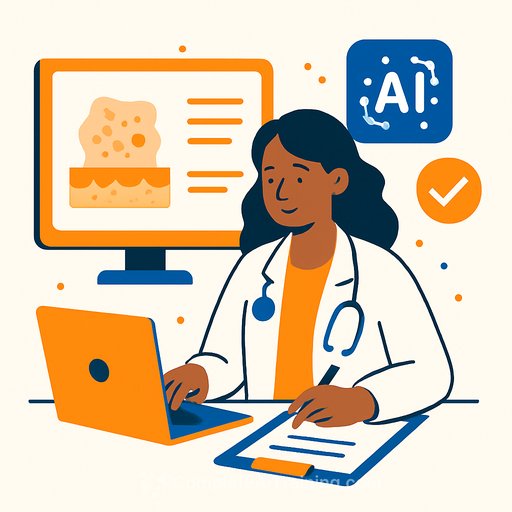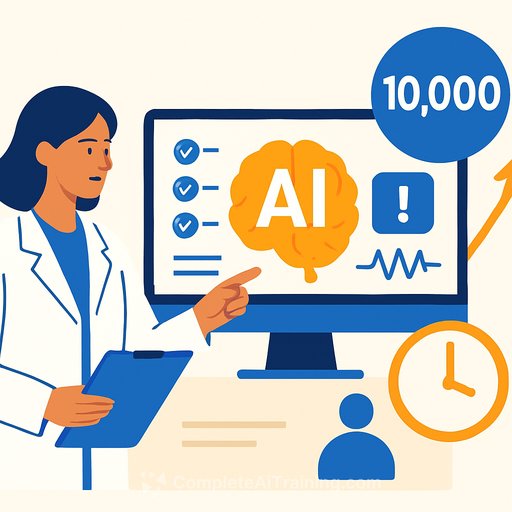How Halcyon Dermatology Cut Documentation Time and Claim Rejections with a Specialty AI Scribe
A generic AI scribe had caused headaches for Halcyon Dermatology with frequent errors and extra work. A new dermatology-specific tool - capturing precise procedure details, appropriate codes and complete clinical justification in real time - now feeds accurate notes directly into the EHR.
The Challenge
Clinical documentation was consuming evenings for Dr. Kathy Lee, founder of Halcyon Dermatology. Reconstructing visits hours later led to delays, bottlenecks, and less face time with patients.
Training was slow and painful. New hires took months to learn documentation workflows, and generic tools often produced notes the team had to fix. When patients called for plan clarification before notes were finalized, staff had to wait on the provider, adding friction to the experience.
The Proposal
Lee evaluated AI scribe options and selected ModMed Scribe for one reason: it understands dermatology. It recognizes the specialty's diagnoses, procedures and vocabulary, and uses ambient listening during visits to generate structured notes.
Integration was non-negotiable. The scribe writes directly into the existing ModMed EHR in real time, reducing manual entry, system switching, and copy/paste work.
Implementation
The team tested two other vendors before rolling out ModMed Scribe in phases. Standard documentation ran in parallel at first to protect patient care while staff adjusted.
Today, it's used across medical and cosmetic visits. During cosmetic procedures, patients often bring up medical concerns; the scribe captures those details on the fly and suggests structured documentation that flows into the chart.
The system also suggests billing codes and post-procedure instructions. After provider approval, structured data lands in the right fields for diagnoses, procedures and medications-without duplicate data entry.
Medical assistants check scribe notes to ensure prescriptions are sent. Admin staff accesses notes immediately for billing and follow-up. Even front-desk staff can see product recommendations at checkout without tracking down a provider.
Results
Post-visit documentation dropped from hours to under an hour per day. Accuracy improved, especially on medication names, and the team eliminated time-wasting copy/paste from a non-integrated tool.
Billing saw fewer coding questions and fewer claim rejections. With precise procedure details, correct codes and clinical justification captured during the encounter, claims go out cleaner and reimbursements arrive faster.
Onboarding moved from three to six months down to weeks. New staff focuses on patient interaction and clinical context instead of wrestling with note structure-and confidence is higher across the board.
What This Means for Healthcare Teams
- Specialty fluency matters. Tools trained on your clinical language reduce corrections and rework.
- Integration beats "AI as an add-on." Real-time chart population cuts clicks and errors.
- Documentation becomes a team asset. Front office, MAs and billing can act on information immediately.
- Better notes improve revenue cycle. Clear justification and correct codes reduce denials and follow-ups.
- Faster onboarding lowers staffing risk. New hires ramp faster when the system handles documentation structure.
Advice If You're Evaluating AI Scribes
- Choose a solution trained on your specialty's procedures, diagnoses and terminology. Generic tools create hidden work.
- Pilot with your hardest cases: multi-step procedures, unusual diagnoses and complex conversations. See where it fails before you deploy.
- Demand tight EHR integration so notes, codes, orders and instructions populate the right fields in real time.
- Track objective metrics: after-hours charting time, coding queries, claim rejections, days to bill, onboarding time.
- Check medication and procedure name accuracy specifically-they're common sources of errors.
- Enable cross-team access so front office, MAs and billing can use the output without hunting for information.
- Align with compliance and documentation standards. For example, ensure coding aligns with CPT guidance from the AMA (overview) and supports documentation burden reduction goals (ONC perspective).
The Bottom Line
Halcyon Dermatology replaced an error-prone generic scribe with a dermatology-specific, EHR-integrated system. The payoff: faster notes, fewer denials, quicker onboarding and better patient flow-without sacrificing clinical focus during the visit.
Further Learning
If your team is building AI literacy to evaluate and operationalize tools like this, explore curated AI courses by job role (Complete AI Training).
Your membership also unlocks:






